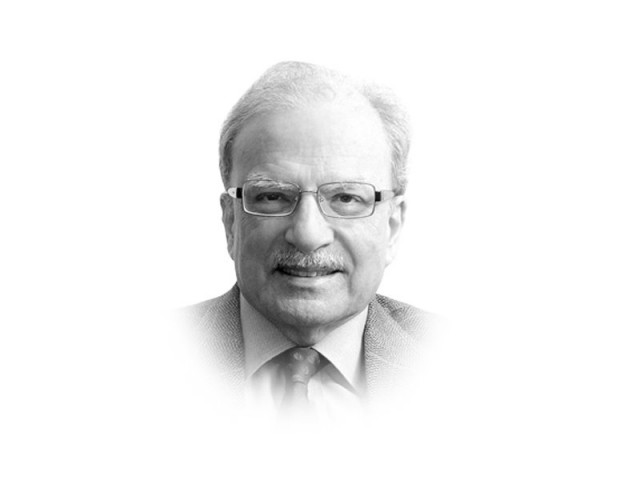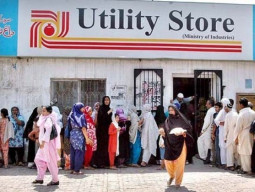
At that time Abdul Qayyum Khan, the chief minister of North West Frontier Province (now called Khyber-Pakhtunkhwa), was the most popular politician in the country. He had governed well, focusing on the economic and social progress of his relatively backward province. While some of his former colleagues had defected from Muhammad Ali Jinnah’s Pakistan Muslim League, he had stayed with the PML. It was widely expected that under his leadership, the PML would win the election, beating the manufactured Republican Party. That political grouping was the brainchild of Iskander Mirza, a bureaucrat-turned-politician who had successfully maneuvered to become the first president under the 1956 Constitution.
Having watched politicians from close quarters, General Ayub Khan had developed contempt for the leaders the existing political order had to offer. He had come to the conclusion that the country needed strong leadership and that would be available only from the military. The general come to see Qayyum Khan as a rival. Also, his receiving the mantle of leadership would only extend the life of Pakistan’s weak state. Gunnar Myrdal, the Swedish social scientist, was still writing his book Asian Drama in which he postulated the presence of the “soft state” as the main reason for South Asia’s relative backwardness. Before staging his coup against the civilian order, his thinking coincided with that of the Swede.
The 1964 election pitted the military president against Fatima Jinnah, the sister of Muhammad Ali Jinnah, Pakistan’s founding father. While Ayub Khan headed the resurrected Pakistan Muslim League, Ms Jinnah was persuaded to lead the Combined Opposition Party. The COP came into election with one just aim: to dissolve the political system the military leader had created and go back to the parliamentary system that was the basis of the Constitution of 1956.
After abrogating the 1956 Constitution, Ayub Khan opted for a presidential form. Before launching the Constitution of 1962, the military leader had introduced “Basic Democracies”, a system of local councils whose members were directly elected by the people. There were 4,000 councils in each of the two provinces, East and West Pakistan. Each council had 10 members. There were, in other words, 80,000 Union Councillors or “Basic Democrats.” Together, they constituted the electoral college for the president and the members of the national and provincial assemblies. Each Union Council elected a chairperson, who then became a member of the Tehsil Council, the lowest tier of government in the multi-level administrative system the British had built during their rule over India. The Tehsil Councils were chaired by the Tehsildar or the Sub-Divisional Magistrate. The system thus brought together elected personnel and officialdom. It was a bottom-up system — the type some political analysts have begun to suggest for increasingly dysfunctional structures in the West, in both the United States and Europe. I have devoted some space to the Ayubian system to suggest that following the 2018 elections, it may be the right time to bring a BD type of system into the political structure to support the order that is still being formed.
Going back, to a brief history of the elections in Pakistan, it is worth noticing that most of the contests were held after the breakup of the country in 1971 and the adoption of a new Constitution in 1973. Only three elections were held in the thirty-year period between independence in 1947 and the first election under the Constitution in 1973. All three were consequential. The first in 1964 was a clear indication that the people of East Pakistan had very different political aspirations than those in the western part of the country. They preferred a far more inclusive system of governance than was the case with the people of West Pakistan. Ayub Khan was able to score a narrow victory over his rival, Fatima Jinnah.
The second election in 1970 was held under an interim legal structure adopted by the government headed by General Yahya Khan who had removed Ayub Khan and taken over as the second military president. The new president abrogated the Constitution his military predecessor had given the country. Ayub’s system did not give representation in the national legislature on the basis of population. Had that been done, East Pakistan would have had more seats in the assembly but that was not acceptable to the political establishment in West Pakistan. The Yahya Khan legal structure adopted population as the basis of representation, giving the eastern wing a much higher share in the assembly. When East Pakistan’s Awami League, under the leadership of Bengali nationalist Mujibur Rehman, won a clear majority, West Pakistan refused to follow the logic of democracy and accept Mujib as the country’s prime minister. The eventual result was a civil war that led to the breakup of Pakistan.
The third election in this period was conducted under the Constitution of 1973, authored by Zulfikar Ali Bhutto. It brought a parliamentary system back to the country and Bhutto was elected as prime minister. But his authoritarian disposition led him to believe that the presidential form was more suited to a country and society such as Pakistan. He wanted to change the Constitution but that would have required a much larger presence in the national assembly. Elections were called in 1977 and the administration was mobilised to rig it in favour of the Bhutto party, the Pakistan People’s Party. But the highly-lopsided election result brought the opposition to the street and Bhutto was thrown out by the military, thus resulting in another extended period of military rule.
Published in The Express Tribune, July 23rd, 2018.
Like Opinion & Editorial on Facebook, follow @ETOpEd on Twitter to receive all updates on all our daily pieces.













COMMENTS
Comments are moderated and generally will be posted if they are on-topic and not abusive.
For more information, please see our Comments FAQ